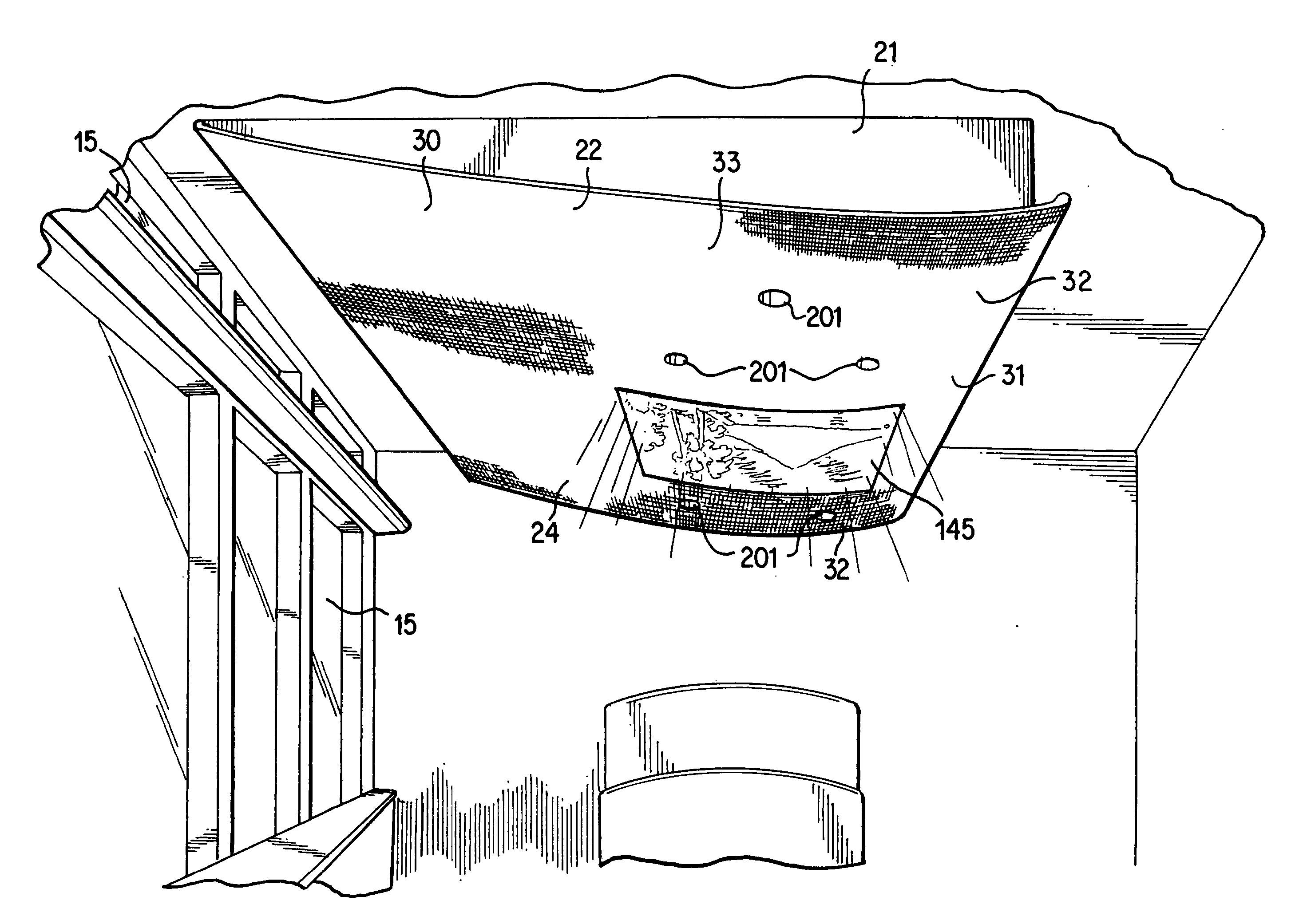Method and overhead system for performing a plurality of therapeutic functions within a room
a therapeutic function and overhead system technology, applied in the field of overhead canopy, can solve the problems of bored patients, upset or irritated patients, and easy turning into bad patients, and achieve the effects of stimulating the healing process, calming the patient, and facilitating the recovery process
- Summary
- Abstract
- Description
- Claims
- Application Information
AI Technical Summary
Benefits of technology
Problems solved by technology
Method used
Image
Examples
Embodiment Construction
[0035] As shown in FIG. 1, the present invention includes an overhead system 10 that is suspended from a ceiling 1 within a room. The overhead system 10 is used to provide therapy to a health care patient by facilitating practitioners working with known evidence-based mind-body therapy protocols, such as visualization, guided imagery or feedback. While the overhead system 10 will be described for use within a pediatric hospital room, its application is not limited to such. Instead, it can be used within any room in a hospital, convalescent home, nursing home, doctor's office, dentist's office or other health care facilities. Additionally, while not as preferred as using the overhead system 10 in a health care facility, the invention can be used outside of the health care facility, and possibly outside of the health care industry. For example, the overhead system 10 could be installed in the home of a patient who is unable to move or be moved for an extended period of time.
[0036] Th...
PUM
 Login to View More
Login to View More Abstract
Description
Claims
Application Information
 Login to View More
Login to View More - R&D
- Intellectual Property
- Life Sciences
- Materials
- Tech Scout
- Unparalleled Data Quality
- Higher Quality Content
- 60% Fewer Hallucinations
Browse by: Latest US Patents, China's latest patents, Technical Efficacy Thesaurus, Application Domain, Technology Topic, Popular Technical Reports.
© 2025 PatSnap. All rights reserved.Legal|Privacy policy|Modern Slavery Act Transparency Statement|Sitemap|About US| Contact US: help@patsnap.com



